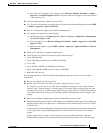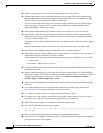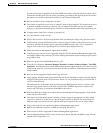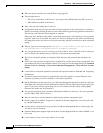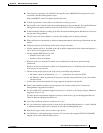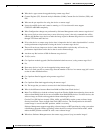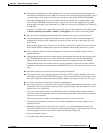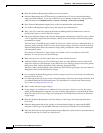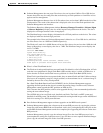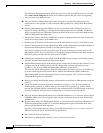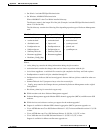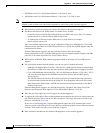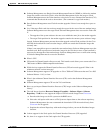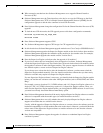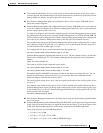
A-49
User Guide for Resource Manager Essentials 4.1
OL-11714-01
Appendix A RME Troubleshooting Tips and FAQs
Software Management
A.
Software Management does not erase files whose sizes are less than 1 MB on Cisco IOS devices
because those files may be config files that are backed up to Flash partitions or .html files or Java
applets used for management.
Software Management subtracts sizes of all files whose sizes are less than 1 MB from the size of the
Flash partition. The result of the subtraction is displayed as the size of the Flash partition in the
Software Management user interface.
The Software Repository Management window (Resource Manager Essentials > Software Mgmt
> Software Repository) displays the size of the largest Flash partition on the device. The size is
displayed as an integer-truncated value in megabytes.
The Distribute Images screen displays information for all Flash partitions on the device. The values
are displayed with two-decimal-digit precision.
The example below illustrates Software Management’s behavior on a Cisco IOS device, which has
two files whose sizes are 10 KB and 50 KB respectively.
The Flash card’s total size is 8 MB. Because it has two files whose sizes are less than 1 MB, the Add
Image to Repository screen displays the size as 7 MB. The Distribute Images screen displays the
size as 7.94 MB.
enm-2502> show flash
System flash directory:
File Length Name/status
1 8089628 c2500-js-l.112-14.bin
2 10470 test_file1
3 52995 test_file2
8153288 bytes used, 235320 available, 8388608 total]
8192K bytes of processor board System flash (Read ONLY)
Q.
What is a Dual Flash Bank device?
A.
The Flash card can be partitioned into two equal banks. Each bank is called a Flash partition. A Flash
card that is not partitioned is Single Flash Bank (SFB) and the device is called an SFB device. A
device that has its Flash card divided into two partitions is a Dual Flash Bank (DFB) device.
When Flash is partitioned into two separate banks, they are named flash1 and flash2. Software image
files have to be completely stored in a single partition, so the maximum size of a software image is
limited by the total size of any Flash partition.
On a Dual Flash Bank Run-from-Flash (DFB RFF) device, Software Management supports
upgrading the flash partition that does not contain the running image. In other words, Software
Management cannot upgrade the RFF partition on DFB devices.
This is because the other partition, which can be upgraded directly, is the recommended partition for
storing the new software image.
The AS5200 device has two Flash cards, bootflash and flash. The flash is an RFF system and
bootflash is an RFR system. The bootflash is intended for storing bootldr images on the AS5200 and
flash is for storing Cisco IOS System Software.
Q.
Does Software Management support software upgrades on dual RSP-based systems?
A.
Software Management updates the software on the master RSP processor by copying the software
image file to the master RSP Flash card (bootflash: slot0: slot1:) and updating the config file on the
master RSP. Software Management cannot do a complete job of upgrading the software on the slave
RSP processor.
Software Management can only copy the software image file to the slave RSP processor, but it
cannot update the config file on that processor. Users will have to run a separate Distribute Images
job to copy the software image file to the slave RSP processor.



